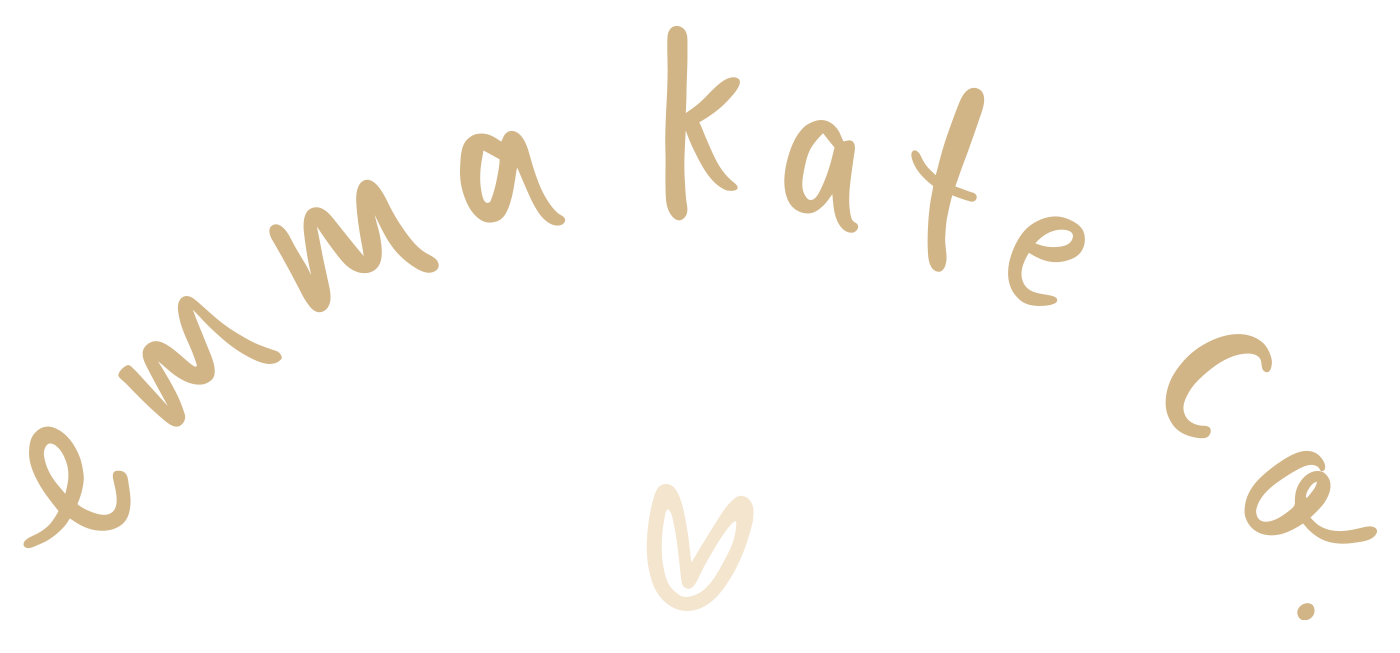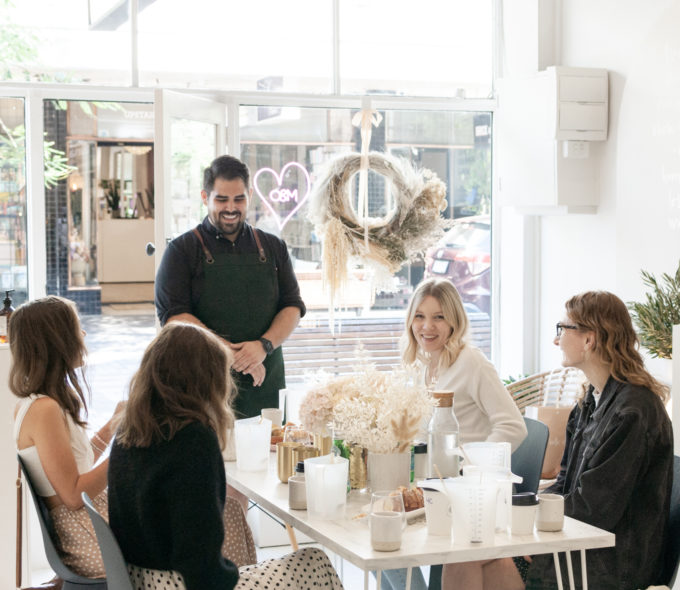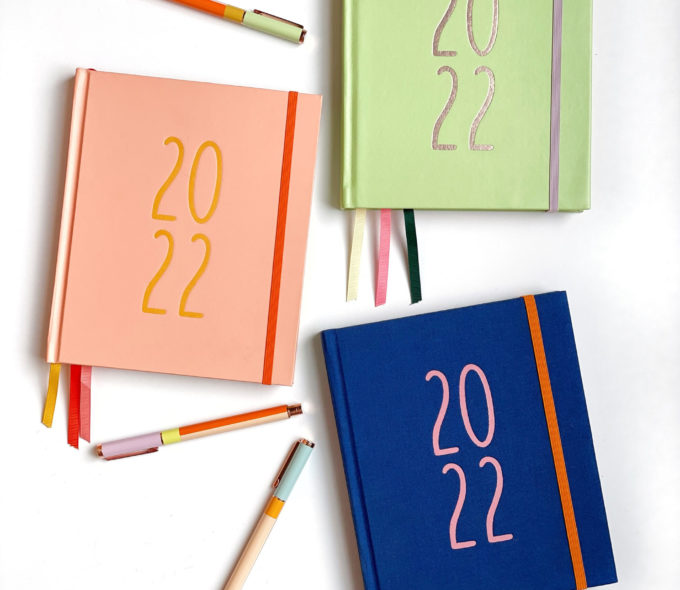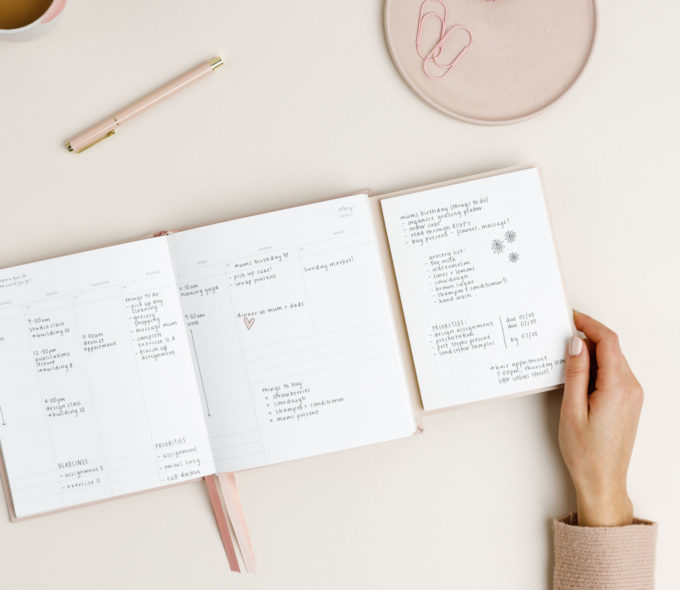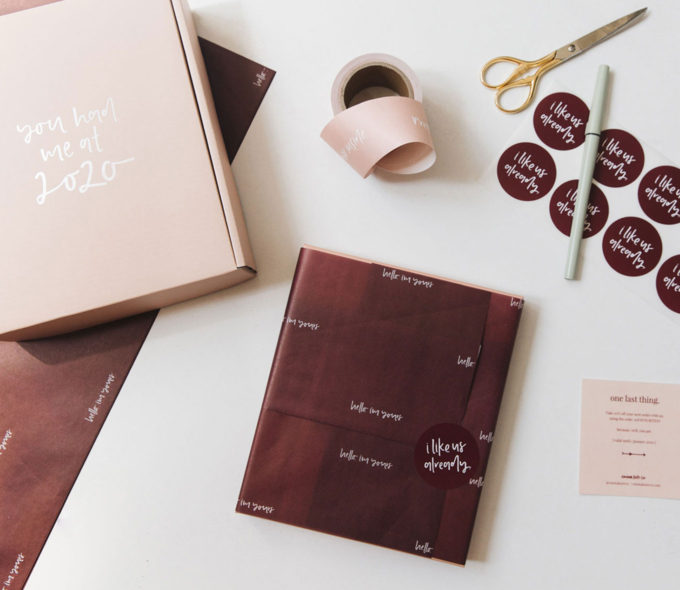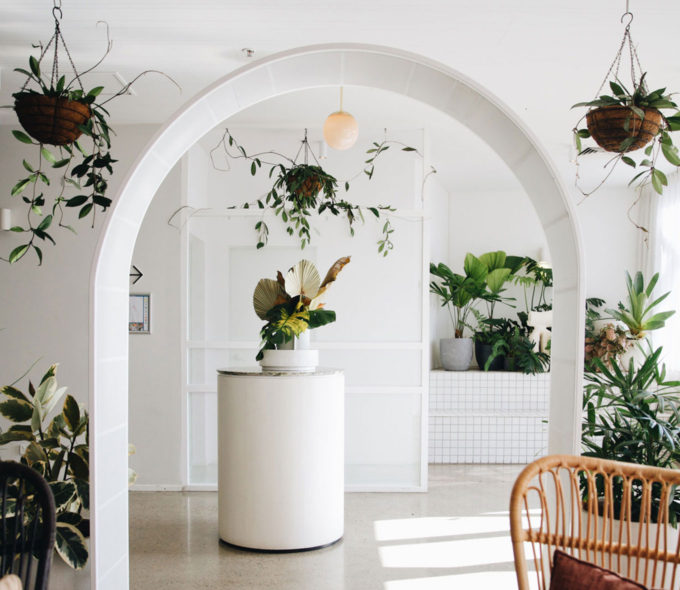Words: Brooke Zotti
A couple of weeks ago, Emma and I took a flight up to sunny Brisbane to immerse ourselves in two days of unbridled creativity at The Design Conference. Needless to say, our decision to take time out from the busyness of studio + everyday life, and to dedicate time for learning was well worth the trip!
As the third conference (held annually by the guys at Analogue Digital Agency) this year’s two-day event featured presentations from a series of creatives hailing from near and far, and from a range of different disciplines within the design industry. It was a wonderful chance to connect with like-minded people and just be surrounded by the creativity of others.
After emerging from the bubble and compiling our creative ah-ha’s and other rushed notes scribbled, here are ten key takeaways we brought back and would love to share with you – on side projects, dream chasing, the future of design and everything between, in the pursuit of a creative life.
1. Give yourself permission to do what you love
Cliché or not, a common theme running through basically all presentations was the need to do what you love – and love what you do – in life. If you really care about what you do, it will show through in your work. You can either show up to a meaningless job and collect a paycheque, or you can get involved – really involved – and make a difference.
Deene Poole said it best: I’ve never met a designer who said “I want to be fucking average today” – we all want to make better and do good for the world.
It was also especially nice to hear that it’s officially never too late to start doing what you love. Camille Walala’s story was inspiring for those lost with choosing a career, struggling to finding a passion or even just trying to hold down a job. The trick is simple: keep searching. Don’t worry about what people will think of you changing directions a hundred times over, be stubborn, and never give up until you find the love.
2. There’s no difference between work and life. It’s all just life.
The importance of work / life balance was discussed heavily over the two days. While it was emphasised that making time for the things we love outside of work is important, even to the extent of scheduling in cooking, or a beach walk into a Google calendar like you would a client’s due date – a creative career ultimately means that it becomes a part of your identity. All of the creatives presenting were advocates of the notion that when you love your work, it doesn’t feel like work and so work-life balance doesn’t really exist – It’s all just life.
As Mike Tosetto said, “I go from something I love, to something I love. It’s all life, it’s all work”.
3. You are not special!
Lauren Hom shared with us that when you can create things that are real and raw, people will relate to your work, because emotions are a relatable feeling. That’s why emotions are such a golden place to draw inspiration from for your projects. Did you have a fight with your partner? Are you hangry (hungry-angry)? Did you lock your keys in the car?
For the majority of the time, whatever you’re going through, other people have been through too. You’re not special – and relatability forges connection.
4. Inspiration is everywhere
Every day you are surrounded by inspiration for work, products and projects. Here are a few practical, instantly accessible ways to find inspiration:
- Ask yourself why are things the way they are? Why have they been done this way? For example, have you considered why a standard bottle of wine is the size that it is? This dates back to glassblowing – the classic wine bottle size was the average lung capacity of a French glassblower!
- Look at everything as an underlying idea. Paying attention – find magic in the mundane.
- Look up from your phone! You never know what you might observe while on the train, bus or waiting in line at the coffee shop.
- Feelings are very powerful, even the bad ones! Take note of your feelings throughout certain periods in your life, and inject them into your work.
- See yourself as a side project! Look at the things you’re already obsessed with and make art out of them. Yes, wine & cheese nights do count!
5. There are so many metrics of success
Each creative has their own unique process of creating, and we should value that process rather than focusing purely on success. Rather than measuring your success based on financial success, or how many likes or followers you have gained in the process, consider other metrics of success: Did you learn a new skill? Did you love it?
6. Passion projects are GOOD.
Passion projects are really important in our creative practices, as they allow us to get the type of work out there that we really love. Once these projects are in your portfolio, more often than not, there is a snowball effect, and you will attract similar type of (paid) work, so start doing the work you want to be given!
7. You can create your own job/opportunities
Create your own job and opportunities, rather than trying to find something already existing. You don’t need to fit into a category. There is no longer a need in this modern age to be boxed in by a particular niche of design or art. We are all creatives/designers that can use a number of mediums to produce the work that we want to put out into the world.
As Dean Poole put it, “Design is like sport without an umpire. You need to make up your own rules as you go.”
8. Don’t take yourself too seriously
Much of Camille Walala’s work, in turning plain white, dull buildings into beautifully colourful artworks as a job – drove home a clear message – we all need to play more! Further, don’t edit yourself as you go, too much, just play, have fun enjoy the process over the result, and see what comes of it. And never stop making stuff!
9. Practice your art with rigour
While getting your inspiration from a number of different sources before you start working is a key part of being a creative, be mindful about what media you are consuming.
Once get your inspiration, go deeper, far deeper! Spend 30+ more hours creating, so that what you end up with is uniquely you, and YOUR work.
10. The world has never needed creativity more than it does right now
There was a LOT of discussion about how the world is changing – rapidly – whether we’re ready for it or not. Prue Jones shared with us the shocking reality that by the year 2025, machine and human intelligence will essentially be indistinguishable. Currently, technological change doubles every 18 months and the pace of change will never be as slow as it is today.
So what will we do, when most jobs are being done by robots? With the rapid development of artificial intelligence (AI), at the moment, it’s a case of having more questions than answers. Questions like… how might we maintain or increase our sense of identity as humans? How might we educate our children to live in this world? How might we live beyond the concept of money, and capitalism? How can we keep human civilization civilised?
And there is only really one answer that do have, on how to tackle all of this: with very, very conscious and human centered design!
So all in all, there has never been a better time to be a designer. The future is for creativity. Anything logical will be taken over by AI, so it is our creativity and willingness to adopt new technologies that will keep us relevant and purposeful.
And, some closing takeaways:
- Be open to random life events!
- Ideas are free, but only useful if implemented
- Never stop learning. Invest in learning.
- Don’t surround yourself with good people, surround yourself with better people and learn from them!
- Design is amazing – we create things out of nothing.
- There’s a shift from the world of design, to design of the world. We don’t design for awards, we design to impact the world/contribute to society.
- Internet Karma is real. If you give good things to the internet, it will give good back
- “You have never been more needed than you are right now.”
